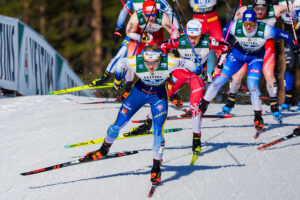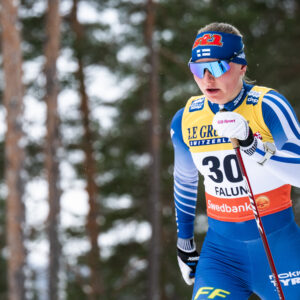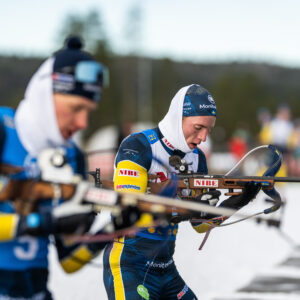The Complexity Of Lactate Threshold
In yesterday’s article, we learned about VO2 max, which is still one of the critical factors in skiing and endurance sports. Another almost equally magical concept is lactic acid and its tolerance, the so-called lactate thresholds, and training at these levels.
In general, we all know what that term means, but it’s good to specify the meaning and effect of lactate in the body.
Lactate threshold is a widely used term in endurance sports training and is one of the most used metrics in training by athletes and coaches. The formation of lactate can occur under aerobic conditions, in which case lactate production results from using glucose in muscle cells under aerobic conditions.
Lactate is a by-product of the use of glucose by muscle cells. The higher the glucose transport into the cell, the higher the lactate production – regardless of the availability of oxygen. During high-intensity exercise, type II fast twitch muscle fibers are fully recruited as skeletal muscles efficiently contract to produce energy (ATP). Type II muscle fibers are highly glycolytic (they use a lot of glucose), resulting in heavy lactate production. This production is a natural by-product of the use of glucose in skeletal muscle cells.
So, lactate is not a waste product because it is the most crucial gluconeogenic precursor in the body. About 30 percent of all the glucose we use during exercise comes from the “recycling” of lactate into glucose. Lactate is also a key regulator of intermediate metabolism, regulating substrate utilization. It reduces and prevents the breakdown of fat for energy purposes (lipolysis) and the glucose use rate in cells (glycolysis).
During intense exercise, lactate production is many times higher than at rest. The release of hydrogen ions (H+) associated with lactate can cause a significant decrease in the pH of the contracting muscle, leading to acidosis and excessive body acidity. This excess accumulation of H+, not only from lactate but also from ATP breakdown during muscle contraction (ATP hydrolysis), can interfere with muscle contraction at various points.
Well-trained athletes take less lactate into the blood because of hard training. They directly remove it in more significant amounts in the lactate-producing muscle, which takes seconds or milliseconds. This is beneficial because it allows faster H+ removal from the contracting muscles and faster lactate “recycling” for additional energy (ATP).
During exercise, lactate is mainly produced in fast-twitch muscle fibers, which use a lot of glucose for energy. Slow-twitch muscles primarily remove lactate. This is a complex process involving various lactate-specific transporters and enzymes. Fast-twitch muscle fibers have a high concentration of a carrier called MCT-4 (monocarboxylate-4 – monocarboxylate transporter isoform), which transports lactate away from these muscle fibers. Slow-twitch muscle fibers have a carrier called MCT-1 that takes up lactate inside the muscle fibers.
This lactate is then converted to pyruvate (pyruvic acid) in the mitochondria by an enzyme called mLDH (mitochondrial lactate dehydrogenase), which is ultimately synthesized into ATP energy.
So, what is the lactate threshold? It is commonly known as exercise intensity or blood lactate concentration, the threshold at which we can sustain high intensity for only a certain period of time. It is difficult to determine what this threshold is because there are many open questions such as what is that period of time, what is the appropriate blood lactate concentration for each athlete, how long can we sustain a particular exercise intensity, and so on.
Researchers have several theories and hypotheses, and there is still no common consensus on the lactate threshold. The most important thing is to understand that at the lactate threshold, muscles become metabolically stressed, leading to high lactate accumulation and muscle acidity. The mitochondria of the contracting muscles are therefore stressed in the process of removing lactate. At some point, if the intensity of the exercise continues, the mitochondria of the contracting muscles become “saturated”, i.e. they become too acidified and are therefore no longer able to remove lactate, in which case the lactate enters the bloodstream and the lactate levels rise and the athlete’s performance freezes.
A typical training mistake that many athletes and coaches make is training at the lactate threshold to improve lactate scavenging capacity. It must be remembered that during exercise, lactate is mainly produced by glycolytic muscle cells (fast), which are recruited at the lactate threshold.
However, lactate is mainly removed by adjacent slow-twitch muscle fibers, which have a very high mitochondrial capacity and a much higher number of mLDH enzymes and MCT-1 transporters. So, it is essential to exercise these slow twitch muscle fibers to stimulate mitochondrial growth and function and increase the production of MCT-1 and mLDH.
However, training at lactate threshold is necessary to improve the function of glycolytic muscle fibers and to increase the number and function of glycolytic enzymes and the number of MCT-4 transporters necessary to transport lactate away from fast-twitch muscle fibers, which are then removed by slow-twitch muscle fibers. Too long training sessions at lactate threshold can also lead to overtraining, which is common for many elite and professional athletes who seek maximum benefit and performance in their competitions.










